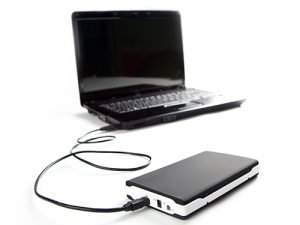When preparing and conducting a sourcing initiative, purchasing managers and creative, strategic sourcing professionals often follow a logical methodology. Having a process gives a framework that, when correctly applied, can consistently produce sustainable savings. The creative approach is necessary for every process, whether coding basics for kids or strategic sourcing. Creativity in applying the strategic sourcing process will dramatically affect the results achieved, regardless of whether a seven-step sourcing process or a customized internal sourcing process is used.
What is Strategic Sourcing?
Strategic Sourcing is the process of operating an organization’s purchasing function focusing on meeting business objectives. Strategic sourcing typically results in substantial savings for an organization but does not qualify as cost reduction or short-term financial management strategy. Strategic Sourcing provides the framework to make better decisions about spending money with suppliers and represents a long-term view of how to establish relationships with suppliers.
While this article intends to provide a foundation, it should not be construed as a how-to guide. As the world of sourcing continuously evolves, so does the methodology applied. This article describes best practices and common usages but does not reflect new methodologies developed or developed in the future.
Understanding The Process.
Strategic sourcing is a process that starts by understanding a company’s business strategy and then determining what supplier capabilities are required to deliver on this strategy.
An overview of how this process unfolds: The following steps are briefly described below, using a fictional home retailer as an example:
Step 1: Understand the business strategy.
The Company’s top management determines its strategic direction for the organization. The strategic direction is communicated throughout the Company to ensure all employees are working towards achieving this vision. A sourcing team within the purchasing function may be assigned to monitor purchase trends and develop future scenarios based on these trends. These requirements will then be used to develop a sourcing strategy and determine what capabilities suppliers will need to meet this strategy.
Step 2: Understanding supplier capabilities.
The Company establishes an overall supplier capability framework that defines vital elements such as price, quality, delivery, and service. The Company’s purchasing managers assess each existing competitive bid opportunity against these criteria to ensure that the requirements of the business units are satisfied. Supplier capabilities may be identified as either ‘must have’ or ‘preferred’, and the sourcing team will attempt to work with suppliers that can deliver on these preferred capabilities.
Step 3: Sourcing RFP development.
Once supplier capabilities have been predefined, a request for proposal (RFP) is developed, outlining the supplier selection criteria and what business opportunities will be available to preferred suppliers. The sourcing team may customize the RFP for specific suppliers to include additional opportunity parameters known. In addition, a scoring matrix is often created as part of this process to help the purchasing managers accurately score each response received from suppliers.
Step 4: Supplier responses.
The sourcing team will typically issue the RFP to preferred suppliers and ask them to submit their response with both a price proposal and an opportunity-specific response. If the Company is issuing an RFP for multiple opportunities, they may either divide this process into several smaller procurements or continue with one large procurement. If the Company sells to more than one end-user, the RFP may be issued based on each business unit requiring different capabilities.
Step 5: Evaluate supplier responses.
The sourcing team will study all supplier responses received to determine which suppliers can satisfy the Company’s requirements. The purchasing managers review the scoring matrix and decide whether a supplier is awarded the business opportunity or not. The sourcing team then uses this information to determine which suppliers can deliver on future opportunities that the Company’s strategic direction has identified.
Step 6: Supplier selection.
Once a supplier has demonstrated they can deliver on various requirements, they may be selected as a partner for the Company’s strategic sourcing initiative. The suppliers may be asked to develop and submit a longer-term business plan outlining how they intend to satisfy the organization’s future purchase requirements. If this supplier is viewed as strategically important, the Company may choose to participate in more detailed negotiations about price and service.
Step 7: Negotiations.
After evaluating all the proposals, organizations enter into negotiations with their preferred supplier. If there is no mutual agreement between both parties, it goes to another round of RFP and negotiations.
Step 8: Contractual Agreements.
Organizations finalize the contract with their preferred supplier, after which they sign a contract with them.
It’s all about making new relationships and building trust while following green buying principles to remain efficient in today’s market scenario.







